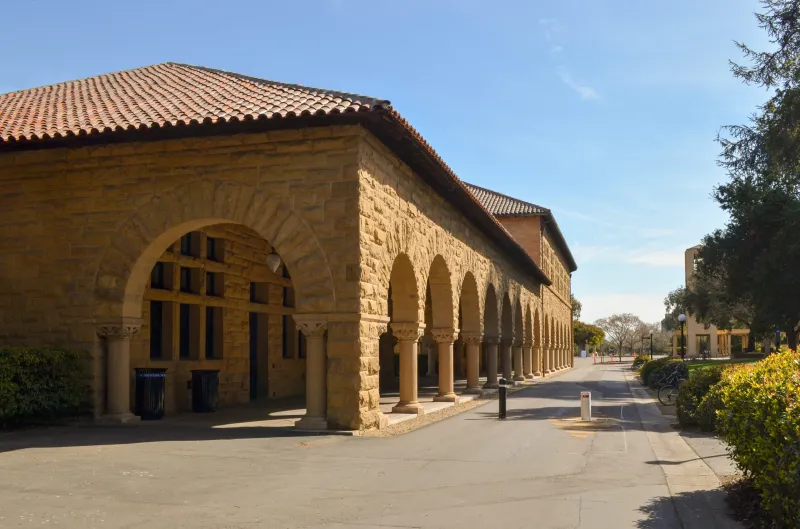Community groups at Stanford have expressed significant worry over the Supreme Court’s upcoming decisions on Students for Fair Admissions, Inc. v. Presidents and Fellows of Harvard College and Students for Fair Admissions, Inc. v. University of North Carolina, which experts predict would hinder colleges’ efforts to ensure more diverse student bodies and provide more equitable financial aid programs.
Phong Nguyen ’25, who works with the 22% Campaign, a group that advocates a broader representation of Asian American communities in Stanford admission decisions, described feeling “distraught” about the upcoming decision.
“I can’t imagine learning the same things and being able to have such incredible experiences, [such as] talking to different people and learning their stories in the same way,” Nguyen said of a ban on affirmative action.
Under a conservative supermajority, the Supreme Court is expected to either ban or hinder affirmative action following cases against the University of North Carolina and Harvard University over their admissions policies. Both cases were heard in October 2022.
Stanford filed a brief in support of race-conscious college admissions policies prior to the cases being heard. The Supreme Court is expected to decide on the two cases by June.
When asked to comment on Stanford’s current position on the ongoing cases, University spokesperson Dee Mostofi wrote in a statement, “We’re not in a position right now to speculate on the court’s ultimate ruling or its potential effects, especially given the nuances involved in the case and the many potential outcomes.”
“Like colleges and universities across the country, we are monitoring these cases very closely, and we will be working to continue administering an admission process that results each year in a class of high-achieving students who are diverse in backgrounds, experiences, talents and interests,” Mostofi added.
The anti-affirmative action group Students for Fair Admissions (SFFA) initially filed the cases in 2014. SFFA made the argument that the universities’ admissions policies discriminate against white and Asian applicants, violating Title VI of the Civil Rights Act of 1965, which bans discrimination on the basis of race for programs receiving federal funds. Both a federal district court and the First Circuit Court of Appeals sided against SFFA.
Even the chance of affirmative action being limited was met with deep concern by Daryn Rockett ’23, Genesis Gilles ’24 and Nathanie Doralus ’24, who currently serve as co-presidents of the Stanford Black Student Union (BSU).
They wrote in a statement to The Daily, “Black students regularly express feelings of isolation and lack of belonging in classrooms and dorms — not including Ujamaa and other dedicated spaces such as the Black Community Services Center.”
“The thought that limitations on Black students’ admission could exacerbate that is daunting,” Rockett, Gilles and Doralus wrote.
Sebastian Colondres-Torres ’25, a social chair for Stanford’s Society of Latinx Engineers (SOLE), said he was concerned about what this decision could mean for Hispanic or Latino students on campus, who make up 18% of the undergraduate student population.
“Latinx representation here is not the highest representation,” Colondres-Torres said. “Just getting rid of affirmative action will cause it to get lower and lower.”
Research does suggest that colleges will likely be met with lower rates of Latinx and Black enrollment if a ban on affirmative action went into effect. An analysis done on California’s ban of affirmative action at public universities — which has been in place since 1996 — indicated similar effects on universities in the state. Recent data from UC Berkeley suggests that its undergraduate student population is 19% Chicanx/Latinx.
Describing what SOLE and other marginalized student-centered groups on campus might face due to the lower minority enrollment that affirmative action’s end might bring, Colondres-Torres said, “It’s reducing those numbers more and more to the point where the organization isn’t going to have that sort of audience that it’s catered towards. It’s not going to have that group of people we’re trying to work with.”
Concerns that affirmative action being undone might lower minority enrollment were reiterated by BSU’s co-presidents, who wrote that affirmative action strikes at the “expressed need for authentically diverse representation in academic and professional fields that presently lack Black perspectives and voices. This echoes across disciplines, from STEM fields to the humanities.”
Colondres-Torres added that banning affirmative action would be “getting rid of an already small group.”
Echoing Colondres-Torres’ worries that an end to affirmative action would reduce already small communities on campus, BSU’s co-presidents wrote that “Anything that could pose a threat to Black students’ ability to join this community has the potential to be detrimental to the vibrance of Stanford’s community.”
When asked what Stanford could do to help underrepresented communities that might be impacted by an affirmative action ban, Colondres-Torres noted that the University could prioritize outreach programs.
Such programs could resemble SOLE’s Tech Challenge, during which members go “to a local elementary school [or] high school, and … work with these students on an engineering challenge. They tackle a solution or tackle an issue that’s presented to them. We provide a lot of motivation to the students,” Colondres-Torres said. “It’s providing that spark that they need to keep pushing [and] keep trying to learn.”
Nguyen echoed Colondres-Torres’ point, noting that Stanford could be “investing in more outreach programs to local neighborhoods and local schools, not just the schools that are in [Stanford’s] neighborhood.”
Nguyen is especially concerned about the changes that a ban on affirmative action would bring to campus culture in and out of the classroom.
Speaking about underrepresented Stanford communities such as the Hmong and Laotian populations, Nguyen said that the need for a diverse campus is clear, “especially for students who want to engage in their culture and find other people who understand each other, especially in an institution that is predominantly white.”
BSU’s co-presidents described the added diversity that affirmative action brings as “a benefit not only to Black students themselves but to a university that wishes to enrich the lives of every student by valuing different perspectives and experiences.”
